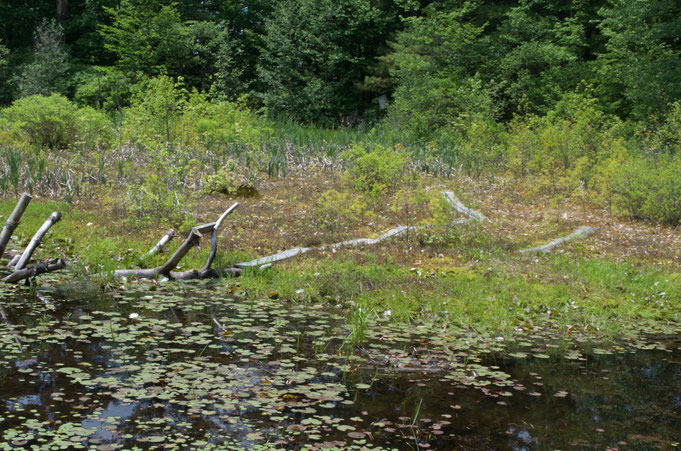The Cranberry Bog at Distant Hill
"Heaven is under our feet as well as over our heads.” - Henry David Thoreau

We call this wetland at Distant Hill Gardens a Cranberry "Bog", but it is technically a semi-rich fen with a much more diverse list of plant species than a bog. It supports plants
like the tiny carnivorous Round-leaved Sundew, the beautiful Marsh St. John's Wort, Tawny Cotton Grass, and Large Cranberry.

Bogs are characterized by high peat content, acidic water, and a floor covered by a thick carpet of sphagnum moss. limiting the number of plant species that can grow in them. Bogs receive all or most of their water from precipitation rather than from runoff, groundwater or streams. As a result, bogs are low in the nutrients needed for plant growth, a condition that is enhanced by acid forming peat mosses.

The highlight of our fen's flora are the Rose Pogonia Orchids growing in the more nutrient-rich section of the fen. They bloom at the end of June into early July. They are often hard to view up close due to the difficulty in accessing the wetlands in which they are found, but our boardwalk makes up-close viewing possible.
Distant Hill was listed as one of the Top 10 Places to Visit in New Hampshire!
Friends of Distant Hill (dba Distant Hill Gardens and Nature Trail) is a nonprofit,
tax-exempt organization under Section 501(c)(3) of the U.S. Internal Revenue Code.
Donations are tax-deductible as allowed by law. Tax ID# 84-3765898
or send a check via Snail Mail to:
Distant Hill Gardens and Nature Trail, 507 March Hill Road, Walpole, NH 03608


